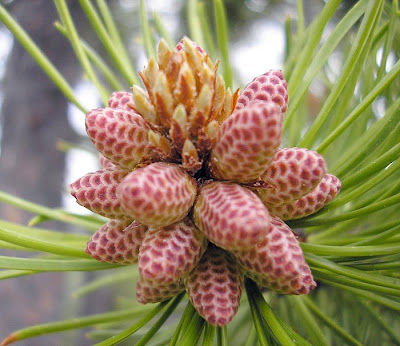There's something about Yamnuska that keeps you coming back. Even when you're driving down the highway for the hundredth time, the looming rock face at the entrance to the Rockies is riveting.. no matter how many times you've looked before.
Yamnuska is always about the trail not taken to me. While we'd always known how little of Yamnuska we'd actually seen, on a late fall hike we saw how easy it could be to go to the next level. After waiting through a long winter and late spring, we were ready to see more.
Approaching the rock face:

Around the backside of Yamnuska, in the new (to us) unexplored part of Yamnuska. The trails here are not for the unsteady!


View from the top!

Might be one of the few photos that made my stomach nervous even taking it!

Imagine living up here...(I imagine the hikers drop enough goodies to make it worth while).

Nat and I did not go to the top. Sometimes on the mountain you can feel when things are not lining up well. The trail both up and down was full of loose rock -- probably a result of the recent thaw. Nat's water bottle took a long drop from one of the ledges we peered over. The mountain was busy -- nothing unusual for a Saturday afternoon, but somehow it was unsettling.
We decided to head down, and soon after, well.... I fell.
Fell sounds much more dramatic than it was. It was more like a slide. The ground and rocks beneath my feet started sliding and before I knew it I was heading down the gentle (thankfully!) slope of the backside. Other than a fairly brief flip where I was vaguely aware I was in mid air, there wasn't much to it except my brain saying "Don't land on your head! Don't land on your head!". Upon landing face down and continuing the slide, the mantra changed to "Dig your hands and feet in, grab something, you can't slide all the way to the bottom!". Which is what I did.
My pants were ruined. My brand-new first time out water bottle had a major gash in it. Some kind soul retrieved my poles from further down the slope. My hands were gashed up and there was a lot of blood running down my right leg, but I was fine. My head was fine, my back was fine and I could walk.
Which is more than I can probably say for Nat's poor heart. She had to watch all of this unfold.
Amazingly enough a doctor had seen the entire thing and kindly brought us over to his blanket so he could patch me up.

Safety tip -- out of about 4 first aid kits brought by the group, only Nat's contained the all-important iodine. Check your kits, and don't assume it's there. It will come in handy.
Another great safety tip -- the doctor recommended a bath with baking soda when I got home. I did exactly that and it did an amazing job cleaning out the cuts and scrapes -- even one that was extremely deep. They all healed without a scar -- save for the very deep one, where the skin was completely removed from a pinkie nail's worth area -- and a few weeks later you couldn't even tell I'd tried to slide down a mountain....
Yamnuska is still riveting when I drive by... maybe even moreso.


































